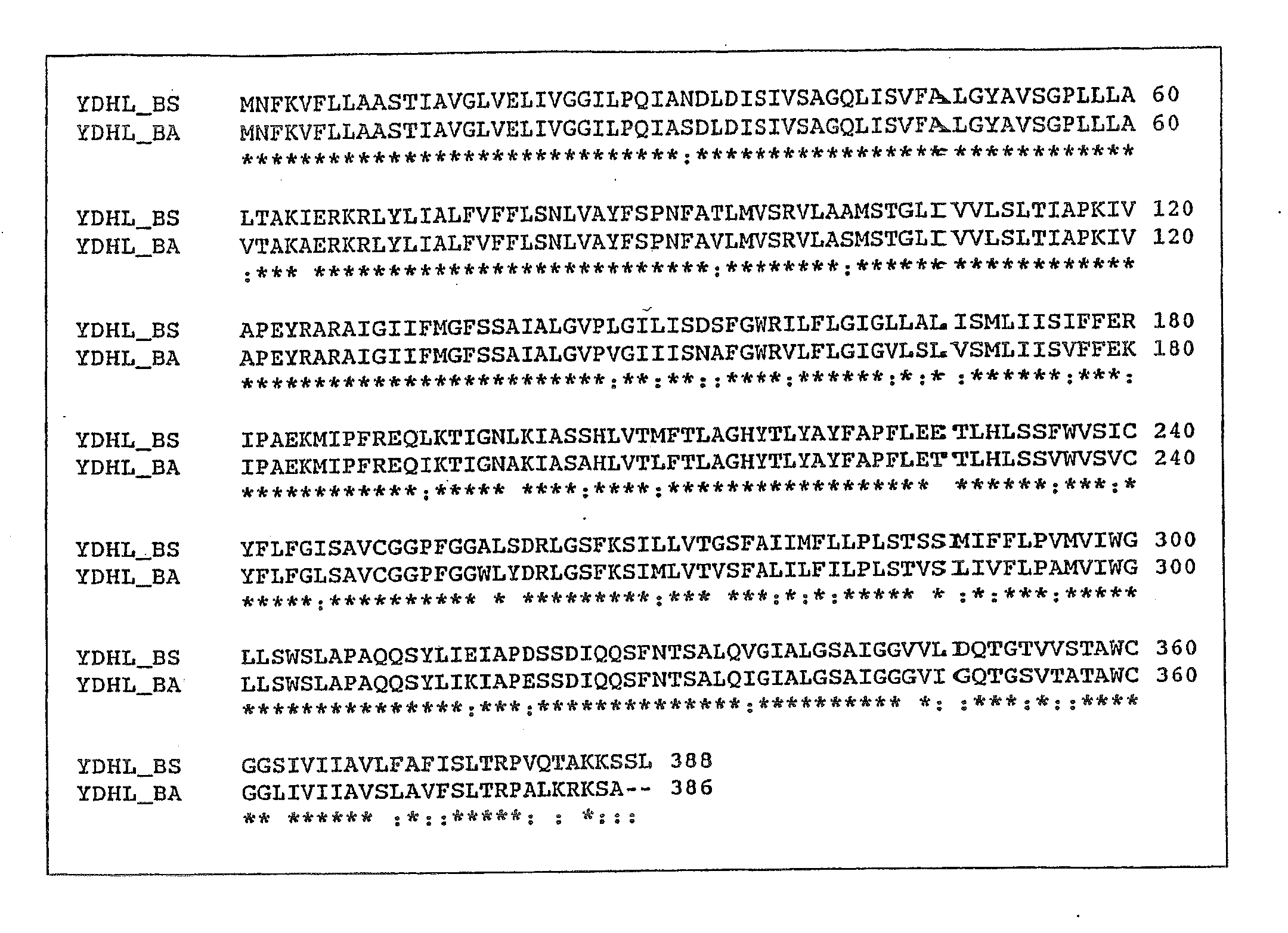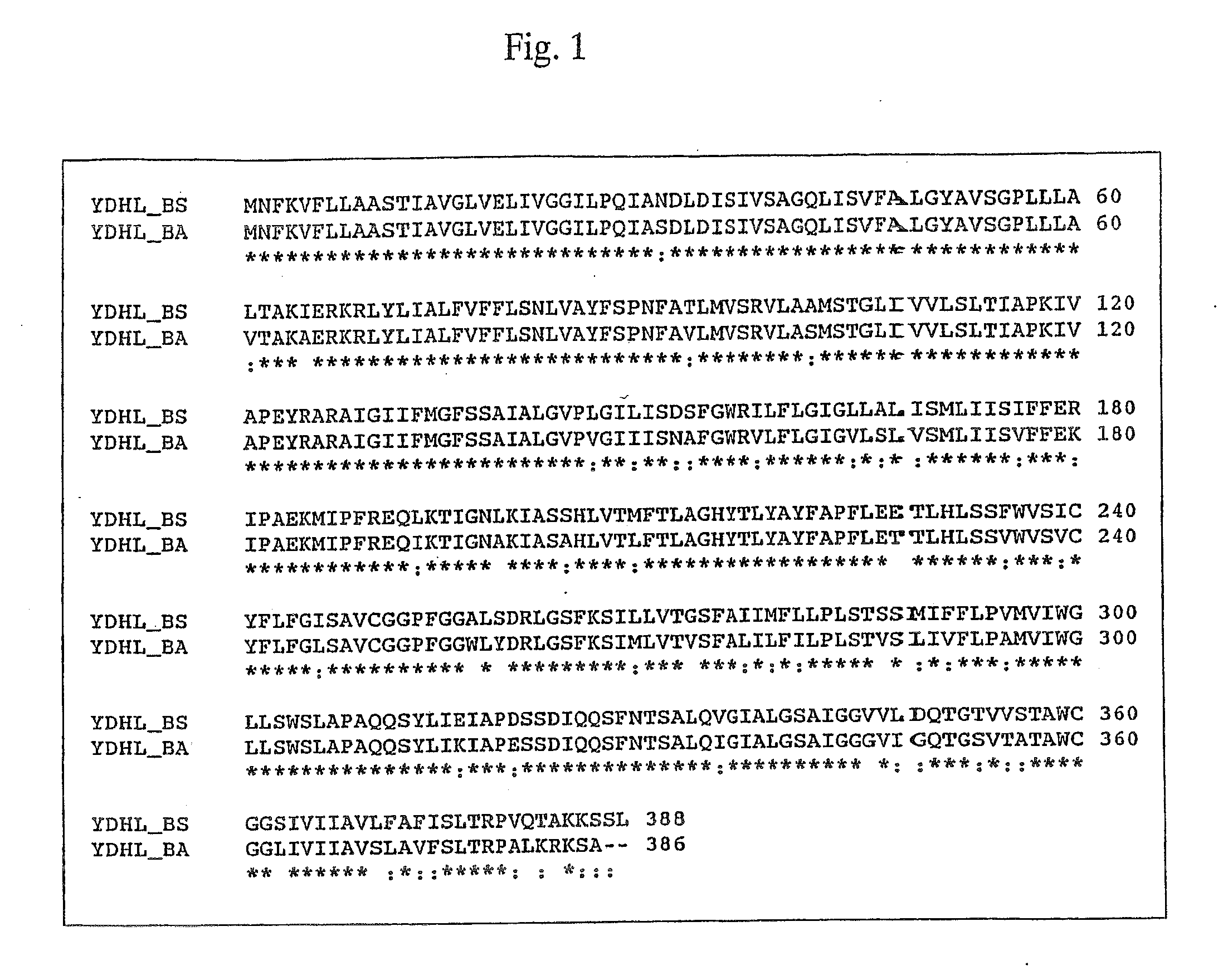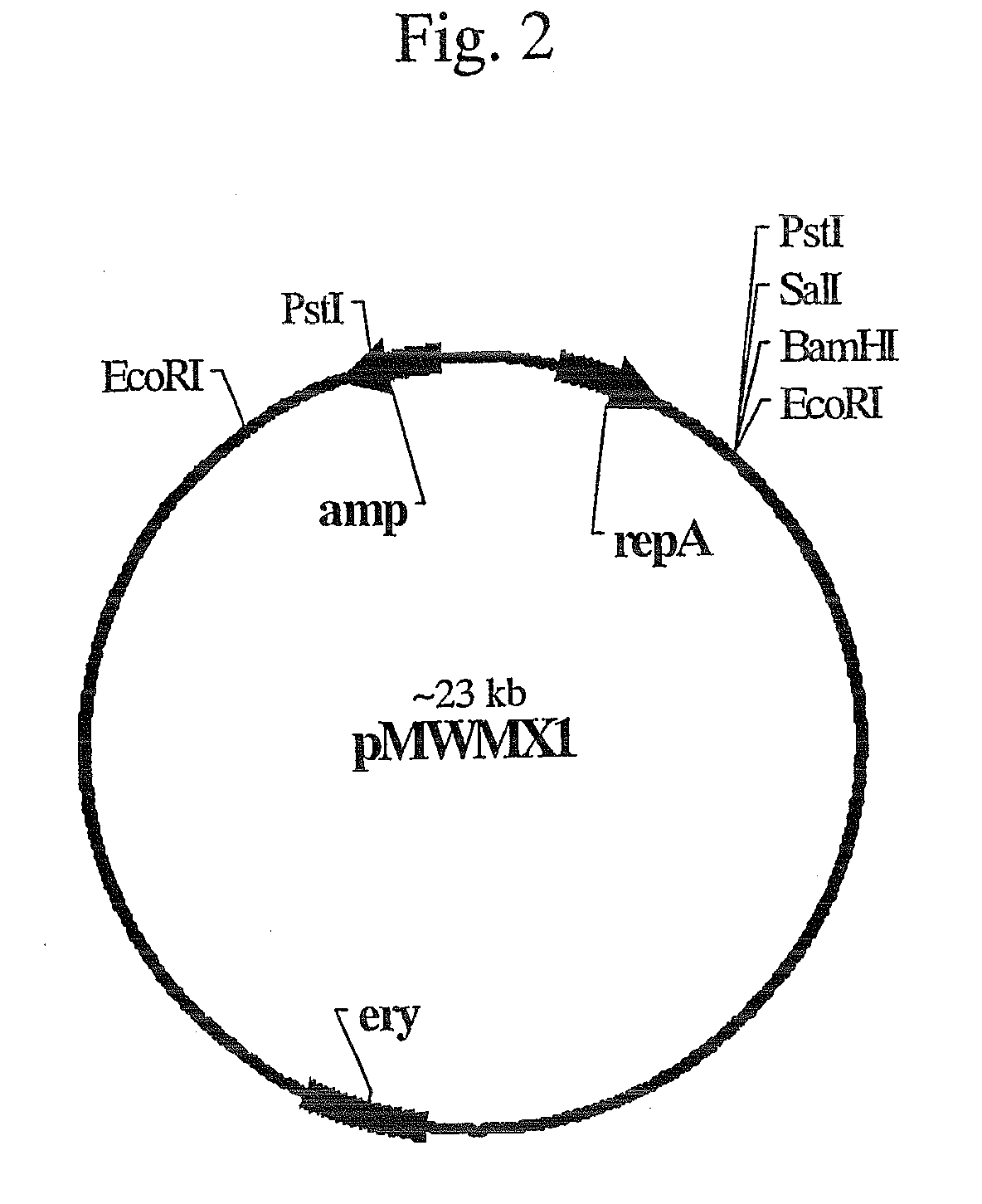Method for Producing Purine Nucleosides and Nucleotides by Fermentation Using Bacterium Belonging to the Genus Bacillus or Escherichia
a technology of purine nucleosides and escherichia, which is applied in the field of purine nucleosides and nucleotides by fermentation using bacterium, can solve the problems of ydhl overexpression on nucleoside secretion and/or nucleoside production, and achieve the effect of enhancing the production of purine nucleosides
- Summary
- Abstract
- Description
- Claims
- Application Information
AI Technical Summary
Benefits of technology
Problems solved by technology
Method used
Image
Examples
example 1
Cloning of the ydhL Gene of B. Subtilis
[0111]The entire nucleotide sequence of B. subtilis subsp. subtilis strain 168 has been determined (Kunst et al., Nature 390, 249-256 (1997)). Based on the reported nucleotide sequence, primers ydhL_N (SEQ ID No. 5) and ydhL_C (SEQ ID NO: 6) were synthesized and used to amplify the ydhL gene from B. subtilis strain 168 via PCR. The primer ydhL_N is identical to the sequence from 489 to 467 bp, which is upstream of the start codon of the ydhL gene, and having the restriction enzyme SalI recognition site introduced at the 5′-end thereof. The primer ydhL_C is complementary to a sequence from 58 to 80 bp, which is downstream of the termination codon of the ydhL gene, and having the restriction enzyme BglII recognition site introduced at the 5′-end thereof.
[0112]The chromosomal DNA of B. subtilis strain 168 was prepared by ordinary methods. PCR was carried out on a “Perkin Elmer GeneAmp PCR System 2400” under the following conditions: 30 sec. at 94...
example 2
Cloning of the ydhL Gene of Bacillus amyloliquefaciens
[0119]The data presented in Example 1 show that overexpression of the ydhL gene of B. subtilis (hereafter: ydhLBs) conferred upon cells resistance to 2,6-diaminopurine and 6-mercaptopurine when introduced simultaneously into M9 glucose minimal agar (Table 1). On the basis of this fact, the cloning of an ortholog of the ydhLBs gene from B. amyloliquefaciens (hereafter: ydhLBa) was performed. The chromosomal DNA of B. amyloliquefaciens strain BA1(IAM1523) was prepared by ordinary methods. The chromosomal DNA was cut with EcoRI and ligated with the pMW118 vector which had been previously treated with the same enzyme. The resulting DNA was used to transform E. coli strain TG1. Transformants were selected on minimal agar containing 400 μg / ml 2,6-diaminopurine, 400 μg / ml 6-mercaptopurine, and 100 μg / ml ampicillin. Plasmid DNA was isolated from the transformants and analyzed. From these, the hybrid plasmid pYDHL2 containing a minimal i...
example 3
Effect of Amplification of the ydhLBs and ydhLBa Genes on Inosine Production by the E. coli Inosine-Producing Strain
[0120]The inosine-producing E. coli strain FADRaddedd (pMWKQ) was transformed with each of the pMW18 vector, the YDHL1 plasmid, and the pYDHL2 plasmid. The transformants were selected on L-agar containing 100 mg / l ampicillin and 75 mg / l kanamycin. Thus, the strain FADRaddedd (pMWKQ, pMW18), FADRaddedd (pMWKQ, pYDHL1), and FADRaddedd (pMWKQ, pYDHL2) were obtained. These strains were each cultivated at 37° C. for 18 hours in L-broth with 100 mg / l ampicillin and 75 mg / l kanamycin, and 0.3 ml of the obtained culture was inoculated into 3 ml of a fermentation medium containing 100 mg / l ampicillin and 75 mg / l kanamycin, in a 20×200 mm test tube, and cultivated at 37° C. for 72 hours with a rotary shaker.
[0121]The composition of the fermentation medium (g / l):
Glucose40.0(NH4)2SO416.0K2HPO40.1MgSO4•7H2O1.0FeSO4•7H2O0.01MnSO4•5H2O0.01Yeast extract8.0CaCO330.0
[0122]Glucose and ma...
PUM
| Property | Measurement | Unit |
|---|---|---|
| concentration | aaaaa | aaaaa |
| DNA resistance | aaaaa | aaaaa |
| drug resistance | aaaaa | aaaaa |
Abstract
Description
Claims
Application Information
 Login to View More
Login to View More - R&D
- Intellectual Property
- Life Sciences
- Materials
- Tech Scout
- Unparalleled Data Quality
- Higher Quality Content
- 60% Fewer Hallucinations
Browse by: Latest US Patents, China's latest patents, Technical Efficacy Thesaurus, Application Domain, Technology Topic, Popular Technical Reports.
© 2025 PatSnap. All rights reserved.Legal|Privacy policy|Modern Slavery Act Transparency Statement|Sitemap|About US| Contact US: help@patsnap.com



